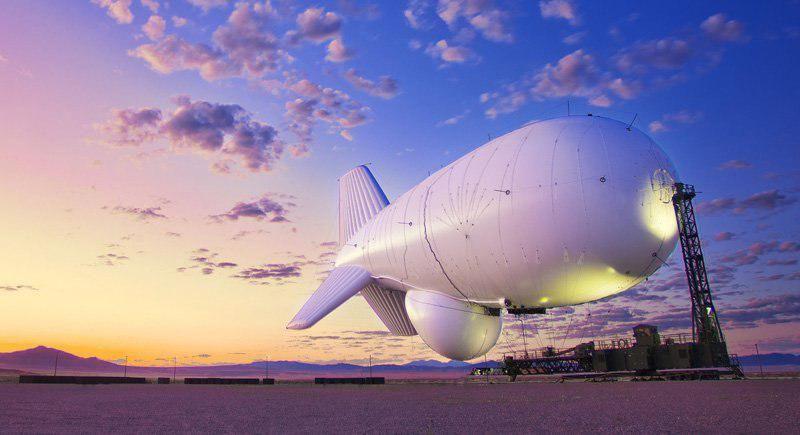Aerostat systems, commonly known as blimps or balloon systems, are tethered lighter-than-air aircraft that can stay aloft for extended periods of time. At the heart of any aerostat system is the aerostat itself - a balloon filled with a gas that is less dense than air, allowing it to float. The two main gases used are helium or cold air. attached below the aerostat is a gondola that houses the payload and support equipment. The aerostat is tethered to the ground by fastening cables that also provide power and data transmission to and from the payload.
Payload Capabilities
The primary function of aerostat systems is to carry various sensor payloads high into the sky to provide over-the-horizon detection capabilities. Common payloads include electro-optical/infrared cameras, signals intelligence sensors, radar systems and satellite communications relays. Being able to operate at altitudes from 3,000 to 30,000 feet allows aerostat systems to see up to 200 nautical miles. This persistent surveillance capability makes them ideally suited for applications like border monitoring, wildlife tracking, search and rescue operations and disaster monitoring. Some aerostat systems can stay aloft continuously for weeks or months at a time.
Applications in Defense
Aerostats System are widely used for defense and security purposes around the world. Many nations operate fleets of tactical and persistent monitoring aerostats to detect threats and gather intelligence. The U.S. military relies on aerostats to provide security at bases and forward operating locations. They have been used extensively in conflict zones like Afghanistan and Iraq. Aerostats provide critical overwatch capabilities with their ability to detect enemy movements and activities day or night under all weather conditions. When combined with signals intelligence and communications relay payloads, they give militaries a powerful persistent aerial surveillance and communications node.
Applications in Homeland Security
Here at home, aerostat systems play an important role in protecting national borders and coastal regions. The U.S. Customs and Border Protection operates dozens of tethered aerostats along the borders with Mexico and Canada. Equipped with electro-optical/infrared and radar sensors, these aerostats can detect and track small boats and illegal border crossings from great distances. They enable border agents to rapidly respond to threats and interdict illegal activities. Some aerostat programs also test aerial surveillance technologies to automatically detect border intrusions. Aerostats are equally suited for monitoring coastal waters and protecting critical maritime infrastructure from air and sea threats.
Challenges of Operating Aerostat Systems
While aerostat systems deliver unmatched endurance and detection capabilities, operating them presents some technical challenges that researchers continue working to overcome. The tether and mooring systems that secure the aerostat to the ground must withstand high winds safely. Adverse weather like heavy rain, hail or lightning poses risks that necessitate precautions. Payload performance can degrade in extreme hot or cold temperatures too. Due to their large size, aerostats require specialized facilities for housing, launch, recovery and maintenance. Corrosive sea air also accelerates wear of aerostat envelope materials over time. Autonomous flight control is another active area of research to reduce staffing demands of ground-based operation.
Future Innovations
Looking ahead, aerostat designers are developing new lightweight composite materials and advancedcoatings to build more durable aerostats. Larger aerostats capable of carrying multiple sensor types or even unmanned aircraft are in development. Intelligent power generation and storage solutions will enable greater payload capabilities and endurance. Aerostat-mounted lasers or directed energy weapons could provide non-kinetic defense options. Autonomous flight control, collision avoidance and precision landing technologies are being tested to safely operate aerostat fleets with minimal human oversight. Connectivity through advanced 5G and satellite communications will drive new mission applications as well. Overall, aerostat systems remain poised to influence the future of long-endurance aerial surveillance and other emerging applications.
Alternative Lift Technologies
While helium has been the standard lifting gas for aerostats, researchers are exploring renewable alternatives as well. Hybrid designs combine lighter-than-air lift with electric propulsion to achieve controlled flight. Fuel cell technology offers a greener long-duration power source. Hydrogen holds promise as a non-finite lifting gas, though its flammability presents challenges. Solar-powered high-altitude pseudo-satellites represent another area of development, taking advantage of the sun’s persistent energy at stratospheric operating altitudes. These modernized aerial observation platforms aim to deliver low-carbon, self-sufficient persistent surveillance capabilities into the coming decades.
Aerostat systems have established themselves as a critical asset for intelligence-gathering, security monitoring, emergency response and countless other defense and civil applications worldwide. Their unique ability to loiter for weeks at a time while peering hundreds of miles renders them highly effective yet affordable persistent surveillance solutions. Ongoing material, sensor and autonomy advancements are expanding the operational scope of aerostats.
Get more insights on this topic: Aerostat Systems



